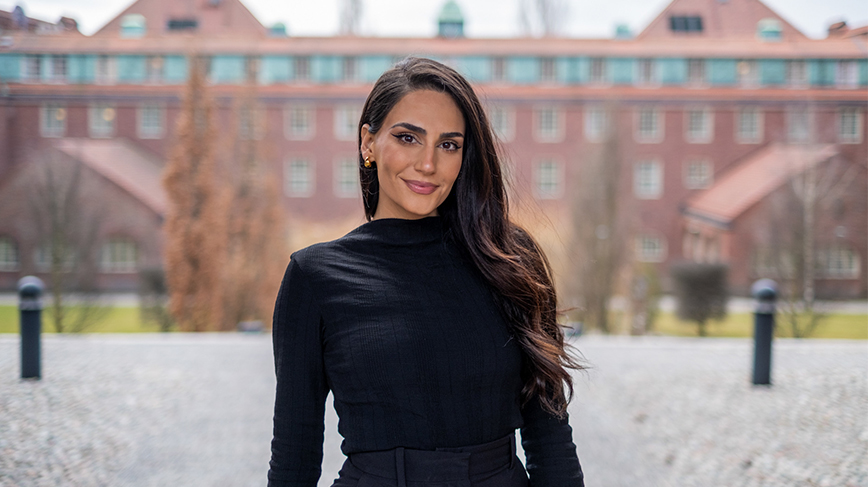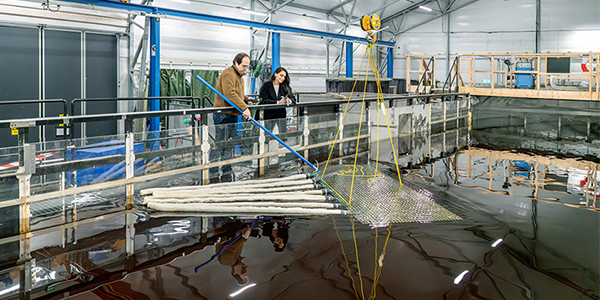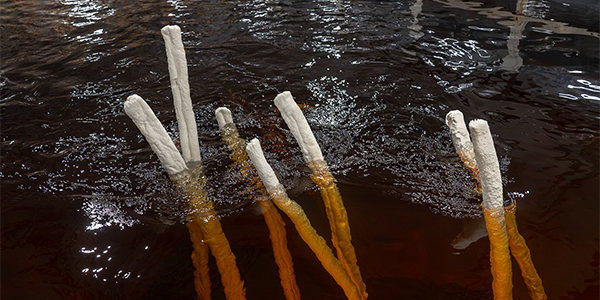KTH researcher's invention saves salmon from damage at hydropower plants

Hydropower plants have major problems with migrating fish getting injured in turbines. KTH researcher Jowan Rostami has developed a unique bio-based foam material to serve as a protective barrier, redirecting fish along a safer route.
Last year, Jowan Rostami, a PhD student in Fiber and Polymer Technology at KTH , was contacted by Vattenfall.
“The energy company's tests showed that salmon perceive the movement of foam rods as obstacles they are reluctant to swim through. But the plastic-based foam material used in the initial pilot trial was unsuitable for real-world settings, as it would have rapidly disintegrated and spread microplastics into the environment,” Rostami says.
The energy company was now looking for an alternative, bio-based material to aid salmon in swimming safely past hydropower plants. After discussions with Professor Lars Wågberg's research group, where Rostami is a PhD student, an intensive collaboration began in 2023.

"Over the past year, we have researched and developed a unique foam material with the right properties, primarily consisting of biodegradable, renewable raw materials from the forest industry," Rostami says.
She says that the production of the material is indeed unique. In addition to cellulose fibers from the forest industry, the foam material has also been produced using the wood-derived component lignin, the world's most common biopolymer after cellulose, with maintained material properties.
“We mainly use bulk materials from the forest industry, such as cellulose fibers and lignin, which is usually incinerated. Now, this important raw material is also used," Rostami says.
She says that the metal racks typically used in front of turbines to keep salmon away can cost hydropower plants hundreds of millions of kronor just to install, aside from the annual maintenance costs.
“Several of Sweden's approximately 2,000 hydropower plants have problems with fish migration and need solutions to provide safe turbine passage for fish. This new sustainable foam material may be needed in Sweden and abroad if hydropower is to maintain full production in the face of new environmental regulations. It's urgent now that society is undergoing a green transition.”

Rostami describes the results of the first pilot trial with Vattenfall as successful.
"We are happy to continue our collaboration with Vattenfall. Together, we aim to further develop the materials for additional application areas," she says.
Together with fellow doctoral student Rebecca Östmans she manages the company Cellufy with support from KTH Innovation . The collaboration has, among other things, contributed to the company already having submitted two patent applications for new types of foam materials.
“Currently, most commercial foam materials are derived from fossil-based materials. Looking ahead, I expect Cellufy to further develop and tailor the materials for use in insulation, packaging, and different filters. The need for sustainable alternatives is great in this area.”
Text: Katarina Ahlfort (
ahlfort@kth.se
)
Photo: Johan Gunséus Vikdahl/Carl Moser (portrait)